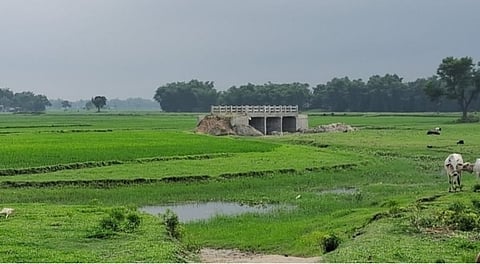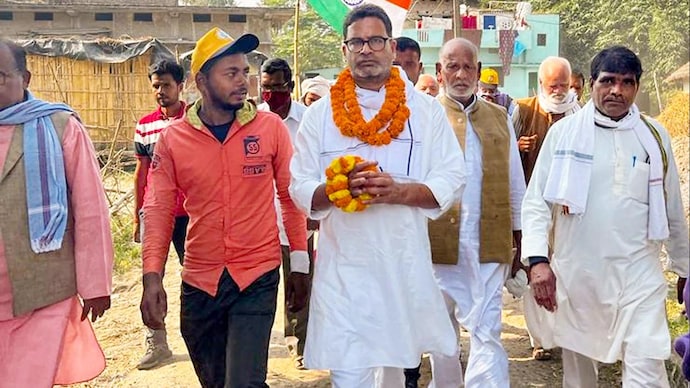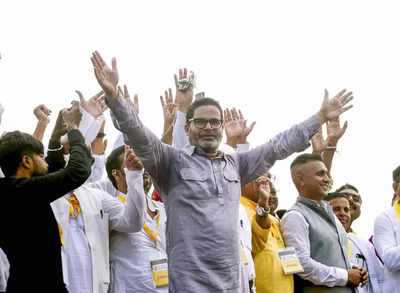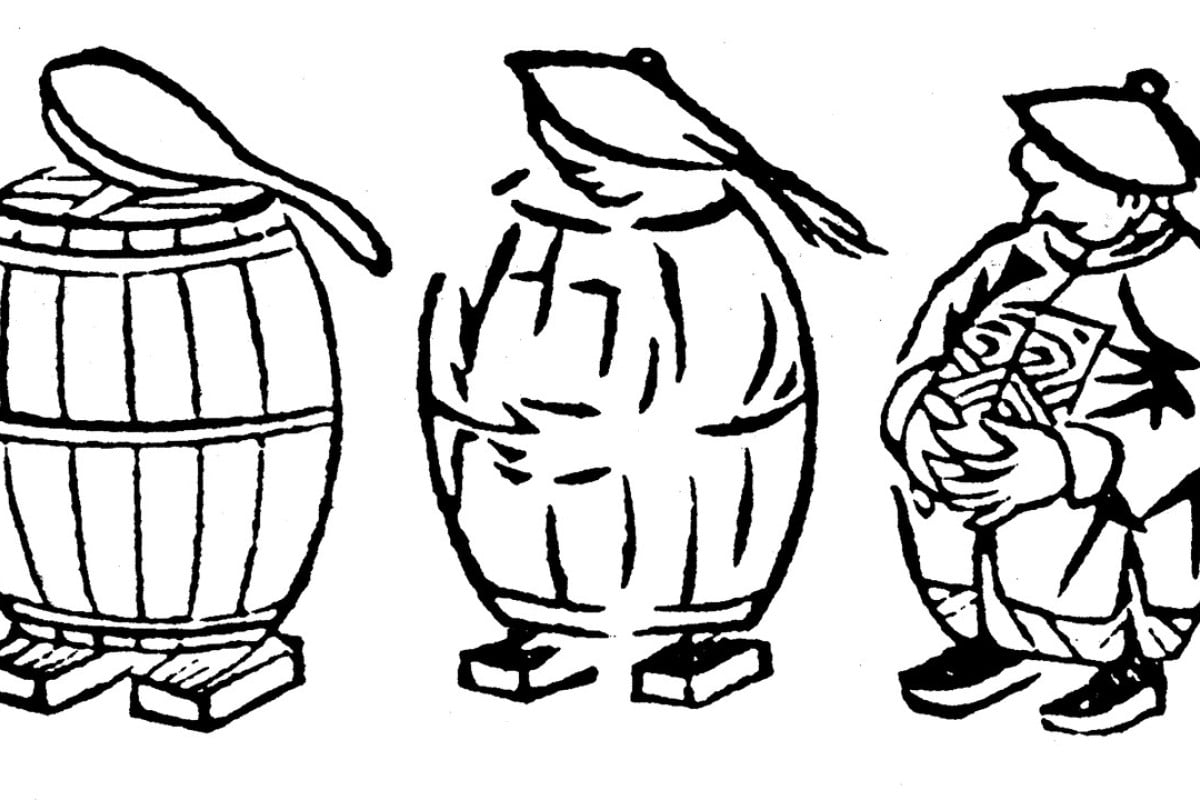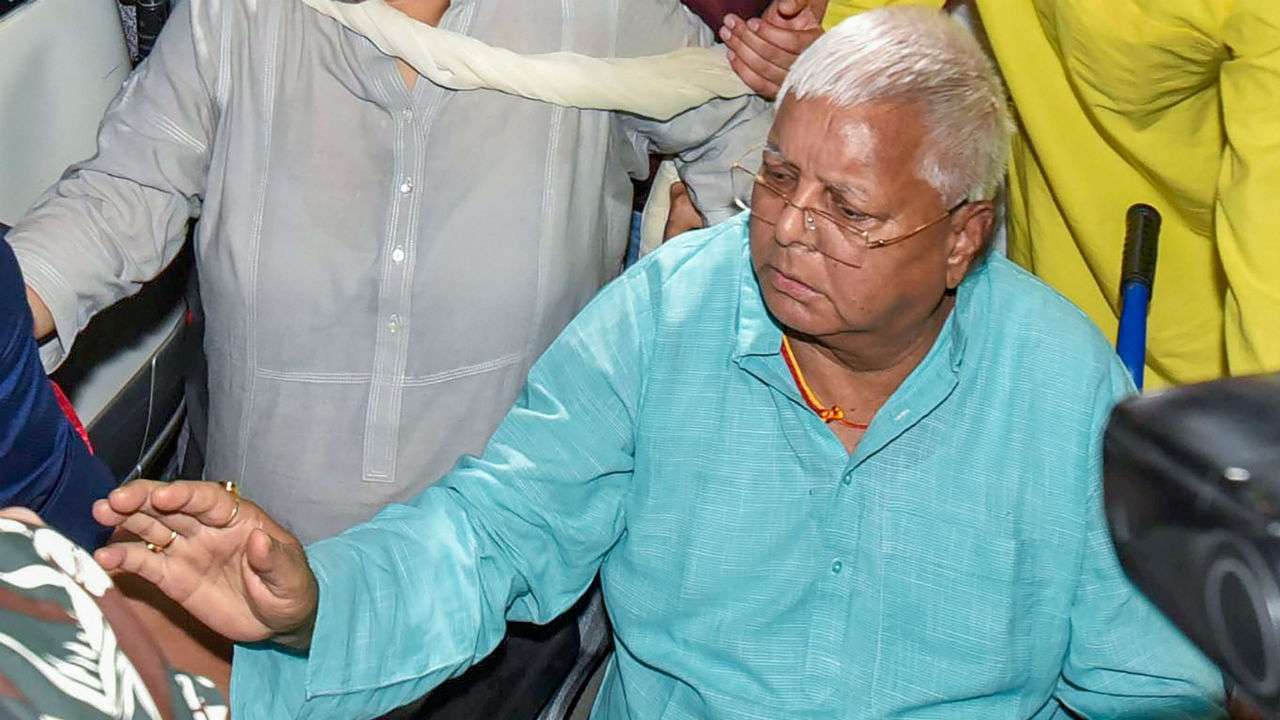A Proposal for Land Reform in Bihar: Addressing Inequality and Empowering Farmers
Land inequality continues to be a major obstacle to economic development and social equity in Bihar—one of India’s most densely populated and agrarian states. With assembly elections approaching, this is a pivotal moment to push for a transformative, equitable, and politically feasible land reform agenda. A robust land reform program can reduce rural poverty, enhance agricultural productivity, and restructure Bihar’s deeply hierarchical land ownership patterns.
Drawing from global best practices, Indian state-level experiences, and the latest data on Bihar’s agrarian economy, this proposal outlines a comprehensive land reform blueprint along with a political strategy to implement it through electoral and legislative channels.
The Current Landscape of Land Ownership in Bihar
Bihar’s rural economy is shaped by extreme disparities in land ownership:
-
According to BAMCEF estimates, just four upper castes—Bhumihars, Rajputs, Brahmins, and Kayasthas—who constitute only 15% of the population, control nearly 78% of agricultural land.
-
NITI Aayog (2019) reports that over 56% of rural households in Bihar are landless.
-
The average landholding in Bihar is only 0.58 hectares, significantly lower than the national average of 1.08 hectares (2015–16 NSSO data).
These figures reveal a deeply inequitable land system that inhibits economies of scale, perpetuates intergenerational poverty, and limits investment in productivity-enhancing practices. Previous reform attempts—such as the Zamindari Abolition Act (post-1947) and land ceiling laws—largely failed due to weak implementation, legal ambiguities, benami (proxy) landholdings, and elite resistance.
Global Lessons for Bihar’s Land Reform Strategy
1. South Korea and Taiwan (Post-WWII Land Reforms)
Both countries broke up large estates and imposed strict land ceilings (e.g., 3 hectares in South Korea), redistributing surplus land to tenant farmers. Landlords received compensation, and reforms were implemented through strong state capacity and political will. The results were rapid increases in agricultural productivity and rural purchasing power—catalyzing their industrial revolutions.
Key Takeaway for Bihar: Impose strict ceilings, redistribute surplus land equitably, and ensure compensation to avoid elite pushback.
2. Bolivia’s Agrarian Revolution (1952)
Following its revolution, Bolivia redistributed 92% of cultivable land held by large estates to indigenous farmers. Peasant unions and grassroots mobilization played a critical role, with over 45% of peasant families receiving land titles by 1970.
Key Takeaway for Bihar: Mobilize grassroots support through civil society, especially among Dalit and backward-caste communities.
3. Paraguay’s Land Reform Failures
In contrast, Paraguay’s top-down land programs were marred by elite capture and corruption. As of 2008, 80% of farmland was owned by just 1.6% of landowners, reflecting the dangers of poorly enforced reforms.
Key Takeaway for Bihar: Build strong enforcement mechanisms and transparent land titling systems to prevent misuse and elite capture.
Lessons from Indian States: What Works, What Doesn’t
1. West Bengal’s Operation Barga (1977)
Led by the Left Front, this landmark reform registered over 1.5 million sharecroppers, providing tenure security and increasing their share of produce. It reduced rural poverty and proved that political will and administrative coordination can yield tangible benefits.
Relevance to Bihar: A similar tenancy rights program, tailored to local conditions, can empower tenant farmers and reduce precarity.
2. Kerala’s Land and Cooperative Reforms
Kerala eliminated absentee landlordism, redistributed land, and supported cooperatives such as Kudumbashree to promote collective farming and enterprise development among women.
Relevance to Bihar: Cooperative models can help smallholders achieve scale and market integration.
3. Bihar’s Missed Opportunities
Despite early enthusiasm, Bihar’s land reforms were undercut by loopholes (e.g., ambiguous definitions of “personal cultivation”), poor land records, and political resistance from dominant caste landowners.
Relevance to Bihar: Without robust legal frameworks, digital land records, and strong political commitment, reform efforts will falter again.
A Comprehensive Land Reform Strategy for Bihar
1. Strengthen and Enforce Land Ceiling Laws
-
New Ceilings: Amend state laws to cap landholdings at 10–15 acres for irrigated land and 25–30 acres for dryland.
-
Fair Redistribution: Acquire surplus land and redistribute 0.5–1 acre to each landless household, prioritizing Dalits, women, and backward castes.
-
Constitutional Protection: Include land redistribution laws in the Ninth Schedule to prevent judicial reversals, as done in West Bengal and Tamil Nadu.
2. Implement Tenancy Reforms
-
Bihar Barga Program: Create a sharecropper registry modeled on Operation Barga. Legalize tenancy with regulated rents (20–25% of produce).
-
Ownership Incentives: After 10+ years of documented cultivation, tenants should receive ownership rights to encourage investment and long-term planning.
3. Modernize Land Records
-
Digitization Drive: Accelerate DILRMP implementation using drones, satellite imaging, and blockchain-based records.
-
SVAMITVA Expansion: Extend the Centre’s SVAMITVA scheme to all rural properties, issuing title deeds and reducing land disputes.
4. Encourage Cooperative Farming
-
Promote Farmer Producer Organizations (FPOs) and Self-Help Groups (SHGs) to consolidate fragmented plots, access bulk inputs, and negotiate fairer prices.
-
Leverage Kerala’s Kudumbashree experience to support women-led cooperatives and local agri-enterprises.
5. Support Services for Marginal Farmers
-
Ensure newly allotted farmers receive subsidized inputs, access to credit, and training in sustainable practices like organic farming, agroforestry, and crop diversification.
6. Public Land for Rural Development
-
Allocate unutilized government land for community infrastructure: irrigation canals, agro-processing centers, grain storage, and digital access hubs.
-
Ensure transparent land acquisition and fair compensation under the LARR Act (2013).
Political Strategy: Turning Reform into a Winning Campaign
1. Campaign Messaging: Justice and Growth
-
Frame land reform as economic justice for Bihar’s 56% landless and a growth strategy to increase food security and employment.
-
Emphasize caste equity and rural prosperity, using case studies from West Bengal, Kerala, and even Bolivia.
2. Grassroots Mobilization
-
Build coalitions with local farmer unions, Dalit organizations, women’s groups, and NGOs.
-
Hold Jan Sunwais (public hearings) and padyatras (foot marches) in high-landlessness districts like Katihar, Gaya, and Araria.
3. Counter Elite Pushback
-
Highlight fair compensation models (e.g., South Korea).
-
Use data and visuals to expose land concentration: "15% control 78%"—make this a rallying cry.
4. Digital Outreach
-
Use social media campaigns on X (formerly Twitter), Facebook, and WhatsApp.
-
Promote reform success stories with short videos, reels, infographics, and local influencers.
Legislative Roadmap for Implementation
1. Assemble a Reform Coalition
-
Partner with progressive and backward-caste parties in the Bihar Assembly.
-
Align with central government policies (DILRMP, SVAMITVA) to unlock funding and institutional backing.
2. Pilot First, Scale Later
-
Launch pilot programs in select blocks with high landlessness.
-
Monitor outcomes, publish data transparently, and use results to build legislative momentum.
3. Ensure Transparency and Legal Protection
-
Set up independent land tribunals with local representation.
-
Mandate monthly dashboards of land reform progress on a public portal.
-
Shield reforms with the Ninth Schedule and invest in legal aid for tenants and marginalized beneficiaries.
Conclusion: Bihar’s Moment for Agrarian Justice
Land inequality is both Bihar’s greatest injustice and its biggest untapped opportunity. With political courage and strategic execution, Bihar can rewrite its rural narrative—moving from a legacy of Zamindari and caste dominance to one of empowerment, equity, and prosperity.
Land reform is not just about hectares and yield—it is about dignity, opportunity, and economic transformation. From South Korea to West Bengal, the roadmap is clear. Bihar must now follow it.
Call to Action
As Bihar heads toward a pivotal election, let us demand a vision rooted in fairness and progress. Land to the tiller, justice to the landless—this is the promise of a new Bihar.
🔁 Share this vision.
📢 Amplify the call.
🧑🌾 Join the movement for agrarian justice.
#LandReformBihar #Bihar2025 #JusticeForFarmers #JanSuraaj
बिहार में भूमि सुधार का प्रस्ताव: असमानता को समाप्त कर किसानों को सशक्त बनाना
भूमि की असमानता बिहार में आर्थिक विकास और सामाजिक न्याय के रास्ते में सबसे बड़ी बाधा बनी हुई है। भारत के सबसे घनी आबादी वाले और कृषि-प्रधान राज्यों में शामिल बिहार में विधानसभा चुनाव नज़दीक हैं — यह वह क्षण है जब एक साहसिक, न्यायपूर्ण और व्यावहारिक भूमि सुधार एजेंडा सामने लाया जा सकता है। एक प्रभावी भूमि सुधार कार्यक्रम न केवल ग्रामीण गरीबी को कम कर सकता है, बल्कि कृषि उत्पादकता को भी बढ़ा सकता है और जातीय-सामाजिक असमानताओं को मिटा सकता है।
यह प्रस्ताव वैश्विक अनुभवों, अन्य भारतीय राज्यों के उदाहरणों और बिहार की वर्तमान भूमि संरचना के विश्लेषण पर आधारित है। साथ ही इसमें चुनावी और विधायी रणनीति भी शामिल है जिससे इस सुधार को ज़मीन पर उतारा जा सके।
बिहार में भूमि स्वामित्व की वर्तमान स्थिति
-
BAMCEF के अनुसार, बिहार में चार ऊंची जातियाँ — भूमिहार, राजपूत, ब्राह्मण और कायस्थ — जो कुल आबादी का केवल 15% हैं, वे 78% कृषि भूमि पर कब्ज़ा रखती हैं।
-
नीति आयोग की 2019 की रिपोर्ट बताती है कि बिहार के ग्रामीण क्षेत्रों में 56% से अधिक परिवार भूमिहीन हैं।
-
2015-16 की NSSO रिपोर्ट के अनुसार, बिहार में औसत भूमि होल्डिंग केवल 0.58 हेक्टेयर है, जो कि राष्ट्रीय औसत 1.08 हेक्टेयर से काफी कम है।
इन आँकड़ों से स्पष्ट है कि भूमि का अत्यधिक केंद्रीकरण न केवल आर्थिक असमानता को बनाए रखता है, बल्कि उत्पादनशीलता और निवेश को भी हतोत्साहित करता है। ज़मींदारी उन्मूलन अधिनियम (1947) और भू-अधिग्रहण सीमा क़ानूनों जैसे पूर्व प्रयास, कमजोर क्रियान्वयन, कानूनी खामियों, बेनामी ज़मीन और प्रभुत्वशाली जातियों के प्रतिरोध के कारण असफल रहे।
वैश्विक भूमि सुधार कार्यक्रमों से सीख
1. दक्षिण कोरिया और ताइवान (द्वितीय विश्व युद्ध के बाद)
इन देशों में बड़े ज़मींदारों की भूमि को छोटे किसानों में बाँट दिया गया। ज़मीन की ऊपरी सीमा (जैसे दक्षिण कोरिया में 3 हेक्टेयर) तय की गई और भूस्वामियों को न्यूनतम मुआवज़ा दिया गया। इससे कृषि उत्पादन और ग्रामीण क्रय शक्ति में वृद्धि हुई।
बिहार के लिए सीख: सख्त भू-सीमा लागू करें, भूमि पुनर्वितरण करें, और उचित मुआवज़ा दें।
2. बोलिविया (1952 की क्रांति)
बोलिविया ने अपनी 92% कृषि योग्य भूमि को स्वदेशी किसानों में बाँट दिया। किसान यूनियन और जमीनी आंदोलन इस सुधार की रीढ़ बने।
बिहार के लिए सीख: दलितों और पिछड़े वर्गों को संगठित कर जनभागीदारी सुनिश्चित करें।
3. पराग्वे की असफलता
यहां भ्रष्टाचार और अभिजात वर्ग को ज़मीन बेचने की वजह से सुधार विफल हो गए। 2008 तक 1.6% लोगों के पास 80% कृषि भूमि थी।
बिहार के लिए सीख: पारदर्शिता, डिजिटल रिकॉर्ड और कानूनी निगरानी सुनिश्चित करें।
भारतीय राज्यों के अनुभव: सफलता और विफलता से सबक
1. पश्चिम बंगाल का ऑपरेशन बर्गा
1977 में शुरू इस कार्यक्रम में बटाईदार किसानों को कानूनी मान्यता और सुरक्षा दी गई। इससे उत्पादकता में वृद्धि और ग्रामीण गरीबी में गिरावट आई।
बिहार के लिए सीख: बटाईदारी को वैध बनाकर और किराया नियंत्रित कर किसान को अधिकार दें।
2. केरल के भूमि और सहकारी सुधार
केरल ने बिचौलियों को हटाकर ज़मीन सीधे किसानों को दी। साथ ही कुडुम्बश्री जैसी सहकारी संस्थाएं स्थापित कीं जिससे महिला किसान भी आर्थिक रूप से सशक्त हुईं।
बिहार के लिए सीख: छोटे किसानों को संगठित कर सहकारी मॉडल अपनाएं।
3. बिहार की असफलता
ज़मींदारी उन्मूलन के बावजूद, बिहार में सुधार लागू नहीं हो सके। “निजी खेती” की परिभाषा अस्पष्ट थी और बेनामी ज़मीन पर कार्रवाई नहीं हुई।
बिहार के लिए सीख: सख्त क़ानून, स्पष्ट परिभाषाएँ, और मजबूत क्रियान्वयन चाहिए।
बिहार के लिए भूमि सुधार की व्यापक रणनीति
1. भू-सीमा क़ानूनों को मजबूत करें
-
सीमा तय करें: सिंचित भूमि पर 10–15 एकड़ और असिंचित भूमि पर 25–30 एकड़ की सीमा लागू करें।
-
पुनर्वितरण: दलितों, पिछड़ों और महिलाओं को 0.5–1 एकड़ ज़मीन दें। उत्तर प्रदेश का उदाहरण सामने रखें।
-
संवैधानिक सुरक्षा: इन क़ानूनों को संविधान की नौंवी अनुसूची में शामिल करें।
2. बटाईदारी में सुधार
-
रजिस्ट्रेशन: पश्चिम बंगाल के ऑपरेशन बर्गा की तर्ज़ पर बिहार में किरायेदारों का रजिस्ट्रेशन कर उन्हें सुरक्षा दें।
-
स्वामित्व अधिकार: 10 साल से ज़मीन पर खेती कर रहे किरायेदारों को मालिकाना हक़ दें।
3. भूमि अभिलेखों का डिजिटलीकरण
-
DILRMP को तेज़ी से लागू करें, उपग्रह चित्रण और GPS का उपयोग कर।
-
SVAMITVA योजना को बढ़ाएं और ग्रामीण परिवारों को संपत्ति कार्ड दें।
4. सहकारी खेती को बढ़ावा दें
-
FPOs और SHGs के माध्यम से छोटे किसानों को जोड़ें, संसाधनों को साझा करें, और बाज़ार से बेहतर सौदे करें।
-
केरल के कुडुम्बश्री मॉडल से प्रेरणा लें।
5. लघु किसानों को समर्थन
-
बीज, खाद, सिंचाई जैसे इनपुट पर सब्सिडी दें और बैंक ऋण की व्यवस्था करें।
-
जैविक खेती और फसल विविधीकरण को बढ़ावा दें।
6. सार्वजनिक ज़मीन का उपयोग
-
गैर-उपयोगी सरकारी भूमि को ग्रामीण इंफ्रास्ट्रक्चर (नहरें, कृषि-प्रसंस्करण केंद्र) के लिए उपयोग करें।
-
भूमि अधिग्रहण और मुआवज़े में पारदर्शिता रखें (LARR अधिनियम 2013 के अनुसार)।
चुनावी और विधायी रणनीति
चुनावी रणनीति: न्याय और विकास का संदेश
-
56% भूमिहीन ग्रामीणों को आर्थिक न्याय और समृद्धि का वादा दें।
-
जातीय-सामाजिक समानता को सामने रखकर अभियान चलाएँ।
-
छोटे किसानों की कहानियाँ, जैसे यूपी के राधेश्याम, से सीख लें — केवल ज़मीन देना काफ़ी नहीं, समर्थन ज़रूरी है।
जमीनी अभियान
-
किसान संगठनों, महिलाओं के समूहों, दलित आंदोलनों और NGOs के साथ गठजोड़ करें।
-
पदयात्रा, जन सुनवाई और गांवों में शिविर लगाएं।
प्रतिरोध का सामना
-
ऊँची जातियों को उचित मुआवज़े का वादा दें।
-
आँकड़ों के माध्यम से असमानता उजागर करें: “15% लोगों के पास 78% ज़मीन” — इसे चुनावी नारा बनाएं।
डिजिटल आउटरीच
-
सोशल मीडिया पर सफल राज्यों की कहानियाँ और विज़ुअल्स साझा करें।
-
युवाओं और महिलाओं के लिए वीडियो, इन्फोग्राफ़िक्स और स्थानीय भाषाओं में कंटेंट बनाएं।
विधायी योजना
1. राजनीतिक गठबंधन बनाएँ
-
पिछड़े वर्गों और दलितों की प्रतिनिधि पार्टियों के साथ गठजोड़ करें।
-
केंद्र की योजनाओं (DILRMP, SVAMITVA) से तालमेल बिठाकर वित्तीय और तकनीकी सहायता प्राप्त करें।
2. पायलट योजना
-
पहले उन ज़िलों में पायलट चलाएं जहां भूमिहीनता अधिक है (जैसे कटिहार, गया)।
-
परिणामों का प्रचार करें और विधानसभा में सुधार के लिए समर्थन जुटाएं।
3. पारदर्शी क्रियान्वयन
-
स्थानीय प्रतिनिधित्व वाली स्वतंत्र भूमि ट्रिब्यूनल बनाएं।
-
एक ऑनलाइन पोर्टल पर मासिक प्रगति रिपोर्ट साझा करें।
4. कानूनी सुरक्षा
-
सुधारों को नौंवी अनुसूची में रखें।
-
भूमिहीनों और किरायेदारों को न्यायिक सहायता उपलब्ध कराएं।
निष्कर्ष: बिहार के लिए भूमि सुधार का समय आ गया है
बिहार में भूमि सुधार केवल आर्थिक मुद्दा नहीं है — यह सामाजिक न्याय और विकास का सबसे ज़रूरी माध्यम है। दुनिया और भारत के कई हिस्सों से हमें दिशा मिल चुकी है। अब बिहार को नेतृत्व करना है।
यदि राजनीतिक इच्छाशक्ति और जनसमर्थन जुड़ जाए, तो बिहार ग्रामीण न्याय और समृद्धि का नया मॉडल बन सकता है।
आह्वान: बदलाव की मांग करें
बिहार चुनाव की ओर बढ़ रहा है — यह समय है उस भविष्य की मांग करने का जहां हर किसान को ज़मीन मिले।
हर खेत को हक़, हर हाथ को ज़िम्मेदारी।
🔁 इस विज़न को साझा करें
📢 जनचेतना फैलाएं
🧑🌾 भूमि न्याय आंदोलन का हिस्सा बनें
#भूमिसुधारबिहार #Bihar2025 #किसानों_को_जमीन #JanSuraaj
Can Prashant Kishor Leap from 15% to 40%? A Critical Look at Jan Suraaj’s Path to Power
The Bihar Equation: Why Prashant Kishor Must Embrace the Bipolar Reality and Lead the NDA
India’s Moment: How Bureaucratic Reform and Meritocratic Politics Can Outperform China
Protected Sectors Of The US Economy
The Problem with Traditional Collateral
Advantages of CBDCs over Cryptocurrencies
Would Leninism Have Been Incomprehensible to Karl Marx?
Russia Needs a Guest Worker Program—And the World Should Pay Attention
Reimagining the United Nations: A 40-40-20 Vision for a Democratic World Order
A Roadmap to Peace in Ukraine: A Neutral UN-Led Path Forward
Fewer Than 100 Companies Are Warming the Planet — And the Himalayas Are Paying the Price
From Colonial Empires to Data Empires: Understanding the Power Differential Then and Now
The Drum Report: Markets, Tariffs, and the Man in the Basement (novel)
World War III Is Unnecessary
Grounded Greatness: The Case For Smart Surface Transit In Future Cities
The Garden Of Last Debates (novel)
Deported (novel)
Empty Country (novel)
Trump’s Default: The Mist Of Empire (novel)
The 20% Growth Revolution: Nepal’s Path to Prosperity Through Kalkiism
Rethinking Trade: A Blueprint for a Just and Thriving Global Economy
The $500 Billion Pivot: How the India-US Alliance Can Reshape Global Trade
Trump’s Trade War
Peace For Taiwan Is Possible
Formula For Peace In Ukraine
A 2T Cut
Are We Frozen in Time?: Tech Progress, Social Stagnation
The Last Age of War, The First Age of Peace: Lord Kalki, Prophecies, and the Path to Global Redemption
AOC 2028: : The Future of American Progressivism
Lalu Prasad Yadav: The Paradox of Indian Politics – A Railway Miracle, a Bihar Tragedy
Land Reform Is the Magic Bullet for Bihar’s Future
Can Bihar Become a Hub for Textiles and Electronics? Exploring the Scope for Labor-Intensive Industries
Agro-Based Industries Most Suitable for Bihar: Harnessing the State’s Agricultural Potential
Manoj Bharti: Diplomat Turned Political Leader and Working President of Jan Suraaj Party
Bihar Assembly Election 2025: High-Stakes Battle Among NDA, Mahagathbandhan, and Jan Suraaj
Bihar: Land Reform That Pays for Itself
A Flourishing Bihar Through Inclusive Land Reform: The Case for Redistribution
Game Changers for Bihar: A Bold Vision for Transformation
Creating Massive Private Sector Jobs Across Bihar: The Prashant Kishor Formula
Data Colonization
A Concrete Five-Year Plan for Bihar
Prashant Kishor Must Be Jan Suraaj’s CM Candidate
Prashant Kishor: Bihar 2025
Can Meritocracy and Multiparty Democracy Coexist? Rethinking Elections for a Data-Driven Era
The Meritocratic Governance Party (MGP)
China: Meritocracy? Autocracy?


